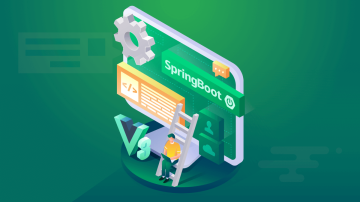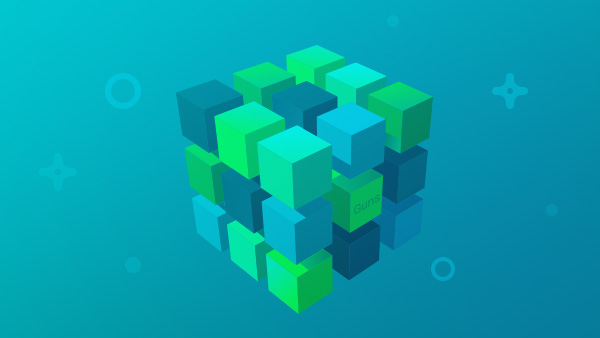前言
前一篇中我们使用spring boot+mybatis创建了单一数据源,其中单一数据源不需要我们自己手动创建,spring boot自动配置在程序启动时会替我们创建好数据源。
准备工作
application.yml中配置connection的4个属性
spring: datasource: read: driver-class-name: com.mysql.jdbc.Driver url: jdbc:mysql://192.168.80.129:3306/test username: root password: 123456 write: driver-class-name: com.mysql.jdbc.Driver url: jdbc:mysql://192.168.80.129:3306/test username: root password: 123456
举个栗子
1、多数据源主要是需要我们手动来创建DataSource、SqlSessionFactory、SqlSessionTemplate。这里我们基于同一个库来创建读写分离的数据源。这里两个方法的返回值都是javax.sql.DataSource。
@Configuration
public class DataSourceConfig {
@Primary
@Bean(name="readDataSource")
@ConfigurationProperties(prefix = "spring.datasource.read")
public DataSource readDataSource(){
return DataSourceBuilder.create().build();
}
@Bean(name="writeDataSource")
@ConfigurationProperties(prefix = "spring.datasource.write")
public DataSource writeDataSource(){
return DataSourceBuilder.create().build();
}
}2、读写分离的配置类。也就是分别创建读写的SqlSessionFactory和SqlSessionTemplate
@Configuration
@MapperScan(basePackages = {"com.zhangfei.dao.read"},sqlSessionFactoryRef = "readSqlSessionFactory")
public class MyBatisDbAConfig {
@Autowired
@Qualifier("readDataSource")
private DataSource dataSource;
@Bean
public SqlSessionFactory readSqlSessionFactory() throws Exception{
SqlSessionFactoryBean sqlSessionFactoryBean=new SqlSessionFactoryBean();
sqlSessionFactoryBean.setDataSource(dataSource);
PathMatchingResourcePatternResolver resolver = new PathMatchingResourcePatternResolver();
Resource[] resource=resolver.getResources("classpath:mybatis/read/*.xml");
sqlSessionFactoryBean.setMapperLocations(resource);
return sqlSessionFactoryBean.getObject();
}
@Bean
public SqlSessionTemplate readSqlSession() throws Exception{
SqlSessionTemplate sqlSessionTemplate=new SqlSessionTemplate(readSqlSessionFactory());
return sqlSessionTemplate;
}
}@Configuration
@MapperScan(basePackages = {"com.zhangfei.dao.write"},sqlSessionFactoryRef = "writeSqlSessionFactory")
public class MyBatisDbBConfig {
@Autowired
@Qualifier("writeDataSource")
private DataSource dataSource;
@Bean
public SqlSessionFactory writeSqlSessionFactory() throws Exception{
SqlSessionFactoryBean sqlSessionFactoryBean=new SqlSessionFactoryBean();
sqlSessionFactoryBean.setDataSource(dataSource);
PathMatchingResourcePatternResolver resolver = new PathMatchingResourcePatternResolver();
Resource[] resource=resolver.getResources("classpath:mybatis/write/*.xml");
sqlSessionFactoryBean.setMapperLocations(resource);
return sqlSessionFactoryBean.getObject();
}
@Bean
public SqlSessionTemplate writeSqlSession() throws Exception{
SqlSessionTemplate sqlSessionTemplate=new SqlSessionTemplate(writeSqlSessionFactory());
return sqlSessionTemplate;
}
}3、read包下的dao接口
public interface StudentReadDao {
List<Student> getStudentList();
Student getById(long id);
}4、wite包下的dao接口
public interface StudentWriteDao {
int delete(long id);
int insert(Student student);
int update(Student student);
}5、分别创建读写的mapper文件。我本地分别创建了:
resources/mybatis/read/studentdao.xml、
/resources/mybatis/write/studentdao.xml
<?xml version="1.0" encoding="UTF-8"?>
<!DOCTYPE mapper PUBLIC "-//mybatis.org//DTD Mapper 3.0//EN" "
<mapper namespace="com.zhangfei.dao.read.StudentReadDao">
<select id="getStudentList" resultType="com.zhangfei.entity.Student">
select * from student;
</select>
<select id="getById" resultType="com.zhangfei.entity.Student">
select * from student where id=#{id};
</select>
</mapper><?xml version="1.0" encoding="UTF-8"?>
<!DOCTYPE mapper PUBLIC "-//mybatis.org//DTD Mapper 3.0//EN" "
<mapper namespace="com.zhangfei.dao.write.StudentWriteDao">
<insert id="insert" parameterType="com.zhangfei.entity.Student">
insert into student (name,age) values (#{name},#{age})
</insert>
<update id="update" parameterType="com.zhangfei.entity.Student">
update student set name=#{name},age=#{age} where id=#{id}
</update>
<delete id="delete" parameterType="long">
delete from student where id=#{id}
</delete>
</mapper>OK。以上几部就搞定了读写分离的准备工作,接着就可以在controller里调用了。 准备工作完成后,还有重要的一点就是需要在程序入口处排除springboot自动属性提供的数据源 @SpringBootApplication(exclude = DataSourceAutoConfiguration.class)
@RestController@RequestMapping("/student")
public class StudentController {
@Autowired
StudentReadDao studentDao;
@GetMapping("/getbyid/{id}/")
public Student getById(@PathVariable("id")long id){
Student student=studentDao.getById(id);
return student;
}
@GetMapping("/all/")
public List<Student> getAll(){
return studentDao.getStudentList();
}
}总结
好了,基本上又是3分钟就搞定了SpringBoot+MyBatis多数据源或者叫做读写分离的工作。那么不知道你又没有反问我们手动创建的DataSource具体类型是什么呢? 这里我们在这里只写了javax.sql.DataSource接口。 我本地用的是springboot 2.0.2 ,当前 DataSourceBuilder 只支持3种类型的数据源: com.zaxxer.hikari.HikariDataSource、org.apache.tomcat.jdbc.pool.DataSource、org.apache.commons.dbcp2.BasicDataSource。可以在DataSourceBuilder类中看到相关代码。那么现在这种情况因为我们引用的内嵌tomcat,所以我们这里返回的数据源类型是org.apache.tomcat.jdbc.pool.DataSource。 可以用instanceof验证一下具体的数据源类型。


 随时随地看视频
随时随地看视频





热门评论
-

慕移动48032972019-01-29 0
查看全部评论这个没有事务管理器吗?不需要在service层通过@Transactional(value = "bbb")来切换对应的事物管理来实现数据源切换?
直接通过mapperscan对应的包下面就使用对应的数据源吗